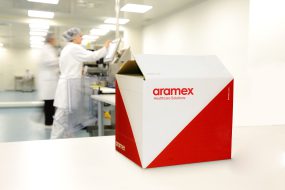

Fast and reliable last-mile delivery has evolved from a competitive advantage to a necessity. The global market is increasing and is expected to hit$288.9 billion by 2031. Consumers not only appreciate fast delivery—they demand it. For industries like pharmaceuticals, though, last-mile delivery is more than a convenience—it’s crucial to saving lives. This article explores how to future-proof last-mile delivery for pharmaceuticals.
The importance of last-mile delivery in pharmaceuticals
When discussing last-mile or final-mile delivery in the pharmaceutical industry, we refer to the process’s final stage. This is when medical products or devices are transported from a distribution centre to a pharmacy, clinic, or directly to the patient. Unlike other industries, delays or mishandling at this stage can have serious consequences. Inefficiencies in the pharmaceutical supply chain contribute to a $35 billion problem, threatening the safety of patients and the integrity of medicines. As healthcare shifts away from centralised hospitals towards more varied points of care, last-mile delivery becomes even more critical.
Unique obstacles in last-mile delivery
One of the most challenging aspects of delivering medicine to its final destination is maintaining it under appropriate conditions. Pharmaceuticals often need specific temperature and humidity levels to remain effective. While it is easy to manage these conditions in a controlled environment, maintaining them becomes difficult once the medication is on the road.
Related article: The Prescription of Post-Pandemic Pharmaceutical Priorities
Current methods and technologies
Last-mile delivery in the pharmaceutical industry blends traditional methods with cutting-edge technology. IoT-powered courier facilities can keep sensitive drugs cool while in transit. In addition, companies are adopting electric vehicles (EVs) and drones to cut costs and emissions while delivering medicines with the care they need.
Related article: What Could Healthcare Logistics Look Like in 2030?
What impacts last-mile delivery optimisation?
Complying with rules and regulations
Pharmaceuticals are heavily regulated in terms of how they are stored and delivered. Not adhering to the rules can lead to fines or even jeopardise patient safety. Since regulations can vary from one location to another, handling international deliveries becomes complicated. It’s critical to ensure that delivery meets local standards to protect both the product and the people who need it.
Temperature-sensitive products and storage
Some medicines, like vaccines and insulin, are very sensitive to temperature. The medicine can become unusable and dangerous if the cooling process breaks down during delivery. Therefore, it is key to maintain these items at just the right temperature until they are safely delivered.
Security issues
Medicines are valuable, making them a target for theft and tampering. To prevent these issues, companies use special packaging that displays any signs of tampering and GPS systems to monitor real-time deliveries. These precautions help protect both the product and the patient.
Steps to boost last-mile delivery
Data-driven decisions
Companies are increasingly using data to guide decisions to improve last-mile delivery. Advanced analytics can help plot out the best routes and predict traffic patterns, weather conditions, and other factors, making same-day deliveries quicker and more reliable.
Packaging and tracking innovations
New technology in packaging and tracking is also helping last-mile delivery. For instance, innovative packaging that tracks temperature or humidity can alert stakeholders if there’s a problem. Similarly, real-time tracking systems ensure that everyone can see where a delivery is and whether it is on track.
Partnering with local couriers
Teaming up with local courier services is another way companies solve last-mile challenges. These couriers know the landscape better and can reach remote places more quickly. Working with local providers means faster, more reliable deliveries, even in tricky areas.
What’s next for last-mile delivery?
New technology on the horizon
More companies will likely embrace drones, self-driving vehicles, and enhanced tracking systems. Some businesses are already combining company-owned vehicles with contractors to manage fluctuating demand and minimise costs. Blockchain technology could also introduce additional layers of security and transparency for sensitive medical shipments.
Rising customer demands
As more patients depend on at-home care, the demand for rapid delivery will continue to rise. Customers want real-time updates on their orders, making tracking more critical. Companies must provide greater visibility into the delivery process to meet these growing expectations.
Adjusting to new regulations
As companies adopt new technologies and delivery methods, regions will likely update existing regulations. Therefore, businesses must stay informed about these changes to ensure compliance and deliver safely and reliably.
Final thoughts
Last-mile delivery may be the most cost-intensive segment of the supply chain. Still, its significance in the pharmaceutical industry is undeniable. Companies can meet growing demands by using dependable healthcare logistics providers, which provide complete visibility from start to finish while ensuring their products remain safe throughout the journey.
If you want to improve your logistics with reliable solutions, contact Aramex for personalised support and expert help.




